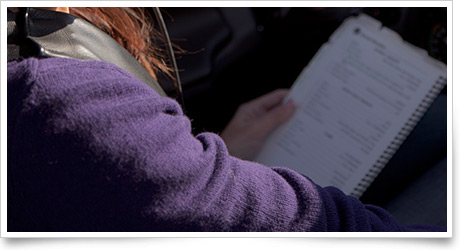| The following stories from the Apr. 13, 2012, edition of AOPA ePilot were provided to AOPA members who expressed an interest in the particular subject areas. Any AOPA member can receive information tailored to their areas of interest by updating their preferences online |
training tips‘After landing’ The next aircraft is on a touch-and-go—and it’s a dramatic arrival to behold. The airplane seems to float, before touching down loudly in a flat attitude. On the “go,” it abruptly balloons upward, seeming to hang above the runway at low airspeed. From the ramp, onlookers see that the pilot has failed to “clean up” the airplane which, still in the landing configuration with full flaps extended, is having a hard time climbing away. Fortunately, a flight instructor is aboard, and now the wallowing trainer’s pitch lowers slightly. The flaps can be seen gradually retracting until the climb resumes at a strong, positive rate. The difference in the quality in the arrival of the two trainers had a simple but vital cause: One pilot performed the prescribed after-landing checklist. The other pilot neglected to run the short list. How short? For a 1980 Cessna 152, the after-landing checklist consists of two items: “wing flaps—up” and “carburetor heat—cold.” The Cessna 172RG Cutlass, a complex aircraft, has a third item: " cowl flaps—open." Don't get the idea that only a pilot a flying touch and go is vulnerable to the problems described here. On the ramp it's not uncommon to behold an aircraft taxi in and shut down—the pilot walking away with the aircraft's flaps still conspicuously full down. If that aircraft also was taxied in with the carb heat not set to "cold," the aircraft was ingesting unfiltered air—and any jagged debris it contained—into the engine as it rolled along. So, what causes the lapse? Distraction, usually. On a touch and go, pilot tension or tricky winds can give a pilot all he can handle before the aircraft leaves the ground again (although it usually takes just one incorrectly configured takeoff to serve as a rude and lasting reminder). On a full-stop landing, letting down mentally after a tough approach, or preoccupation with finding one's way around an unfamiliar airport, have caused similar lapses. But a checklist doesn't have to be long to be important. After every touchdown, run the list. training productsBrightline Bags debuts Flex SystemBrightline Bags, makers of flight bags known for multiple compartments with color-coded zip pulls, has unveiled a new catalogue of products known as the Flex System. The system enables pilots to purchase preconfigured bags ranging in price from $109 for the B2 Compute to $254 for the B25 Carryall. Or, you can put together your own system from an assortment of bags, caps, center sections, and pockets. These range in price from $89 for a front bag to $15 for a side pocket. See a video on the system. Order online or call 415/721-7825.
Note: Products listed have not been evaluated by ePilot editors unless otherwise noted. AOPA assumes no responsibility for products or services listed or for claims or actions by manufacturers or vendors. final examQuestion: What qualifies as a light sport aircraft?
Answer: The definition of light sport aircraft can be found in FAR part 1.1. Here are the basics: 1. 1,320 pounds maximum takeoff weight for aircraft not intended for operation on water, or 1,430 pounds maximum takeoff weight for aircraft intended for operation on water. 2. A maximum airspeed in level flight with maximum continuous power (V H) of not more than 120 knots CAS under standard atmospheric conditions at sea level. 3. A maximum seating capacity of no more than two persons, including the pilot. 4. A single, reciprocating engine. 5. A fixed or ground-adjustable propeller if a powered aircraft other than a powered glider. 6. A nonpressurized cabin, if equipped with a cabin. 7. Maximum airspeed of 120 knots. 8. Fixed landing gear, except for an aircraft intended for operation on water or a glider. 9. Fixed or repositionable landing gear, or a hull, for an aircraft intended for operation on water. 10. A maximum stalling speed or minimum steady flight speed without the use of lift-enhancing devices (V S1) of not more than 45 knots CAS at the aircraft’s maximum certificated takeoff weight and most critical center of gravity.
For more information on sport pilot and light sport aircraft see AOPA's subject report.
Got a question for our technical services staff? Email [email protected] or call the Pilot Information Center, 800/872-2672. Don’t forget the online archive of “Final Exam” questions and answers, searchable by keyword or topic. |
 The student pilot makes a nice
The student pilot makes a nice 

